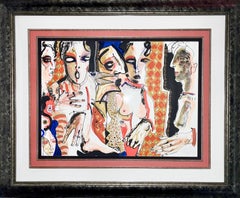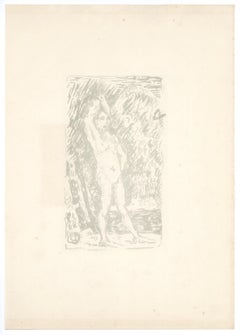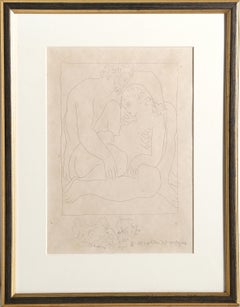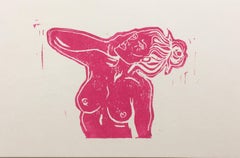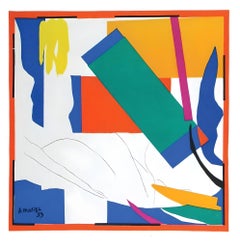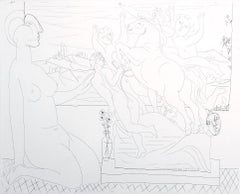Continental US - Nude Prints
20th Century Abstract Expressionist Continental US - Nude Prints
Lithograph
1910s Continental US - Nude Prints
Lithograph
1930s Modern Continental US - Nude Prints
Etching
21st Century and Contemporary Contemporary Continental US - Nude Prints
Archival Ink, Archival Paper, Screen
1950s Modern Continental US - Nude Prints
Lithograph
1930s Cubist Continental US - Nude Prints
Etching, Intaglio, Laid Paper
Early 1900s Impressionist Continental US - Nude Prints
Etching
2010s Contemporary Continental US - Nude Prints
Ink, Rag Paper, Intaglio, Monoprint, Other Medium
Early 2000s Contemporary Continental US - Nude Prints
Engraving, Woodcut, Ink, Linocut
1980s Pop Art Continental US - Nude Prints
Offset, Lithograph
2010s Pop Art Continental US - Nude Prints
Lithograph
1980s Realist Continental US - Nude Prints
Lithograph
1960s American Modern Continental US - Nude Prints
Lithograph
1960s Surrealist Continental US - Nude Prints
Lithograph
1980s Modern Continental US - Nude Prints
Lithograph
Early 1900s Impressionist Continental US - Nude Prints
Drypoint
1990s Pop Art Continental US - Nude Prints
Lithograph
1950s Modern Continental US - Nude Prints
Lithograph
Early 1900s Impressionist Continental US - Nude Prints
Lithograph
Early 2000s Continental US - Nude Prints
Etching
1960s Surrealist Continental US - Nude Prints
Etching
Early 2000s Contemporary Continental US - Nude Prints
Woodcut, Paper
2010s Contemporary Continental US - Nude Prints
Digital
1950s Continental US - Nude Prints
Lithograph
1910s Expressionist Continental US - Nude Prints
Engraving, Woodcut
1950s Modern Continental US - Nude Prints
Lithograph
21st Century and Contemporary Contemporary Continental US - Nude Prints
Digital
1940s American Modern Continental US - Nude Prints
Drypoint
Mid-20th Century Abstract Impressionist Continental US - Nude Prints
Lithograph
1930s Symbolist Continental US - Nude Prints
Etching
Late 20th Century Modern Continental US - Nude Prints
Lithograph
20th Century Contemporary Continental US - Nude Prints
Mixed Media, Screen
1970s Pop Art Continental US - Nude Prints
Etching
1980s Pop Art Continental US - Nude Prints
Board, Screen
1950s Modern Continental US - Nude Prints
Lithograph
1980s Surrealist Continental US - Nude Prints
Lithograph
1910s Impressionist Continental US - Nude Prints
Etching
21st Century and Contemporary Contemporary Continental US - Nude Prints
Digital
1950s Modern Continental US - Nude Prints
Lithograph
1930s Cubist Continental US - Nude Prints
Laid Paper, Etching
21st Century and Contemporary Contemporary Continental US - Nude Prints
Rag Paper, Archival Pigment
Mid-20th Century Abstract Impressionist Continental US - Nude Prints
Lithograph
1950s Cubist Continental US - Nude Prints
Lithograph
1980s Photorealist Continental US - Nude Prints
Screen
2010s Surrealist Continental US - Nude Prints
Photographic Paper
1960s American Modern Continental US - Nude Prints
Lithograph
21st Century and Contemporary Contemporary Continental US - Nude Prints
Archival Paper
Early 2000s Contemporary Continental US - Nude Prints
Felt Pen, Lithograph, Offset
1960s American Modern Continental US - Nude Prints
Lithograph
2010s Surrealist Continental US - Nude Prints
Photographic Paper
1980s Contemporary Continental US - Nude Prints
Lithograph
Early 2000s Contemporary Continental US - Nude Prints
Linocut
1980s Pop Art Continental US - Nude Prints
Offset, Lithograph
20th Century Continental US - Nude Prints
Etching
1950s Modern Continental US - Nude Prints
Lithograph
20th Century Realist Continental US - Nude Prints
Lithograph
Early 2000s Pop Art Continental US - Nude Prints
Giclée
Early 2000s Pop Art Continental US - Nude Prints
Screen
1990s Contemporary Continental US - Nude Prints
Linocut
1990s Cubist Continental US - Nude Prints
Lithograph
